Not to mention Yunnan small grain coffee is disgusting, drinking is not Yunnan boutique coffee | Yunnan coffee origin
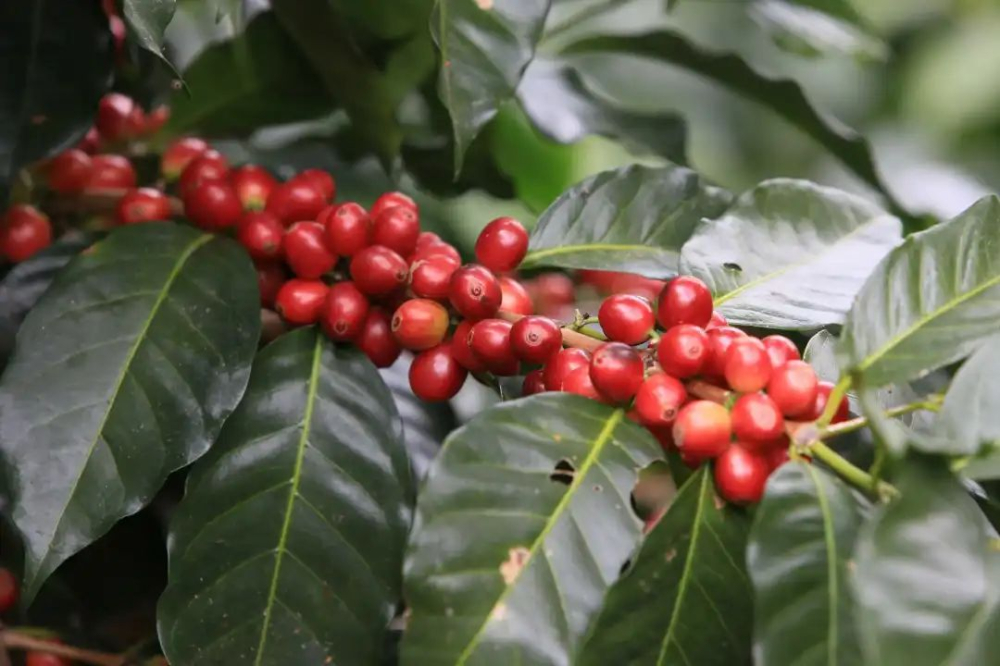
Yunnan coffee production accounts for 1% of the global coffee, and there are mainly three sets of introduced coffee in Yunnan in history.
The first batch of Yunnan small-grain coffee was introduced by the missionary Tian Deneng a hundred years ago. At that time, because of the opening of the Yunnan-Vietnam railway, it was able to preach in the interior of Yunnan, and also brought coffee seedlings. The church is located in Zhugula Village, Binchuan County, Yunnan Province. most of the descendants of coffee trees scattered around the church died of a cold injury in the 1980s. Tian Deneng planted the last one himself, which was carved into a root carving by Hougu Coffee a few years ago.
The second group was in 1952, when the scientific and technological personnel of Mangshi Branch of Yunnan Agricultural Experimental ground brought more than 70 kilograms of fresh fruit from Nongxian Village to Lujiangba in Baoshan City for trial planting and found that they had good adaptability and good quality. And thus continue to grow, coffee farmers generally call this batch of old varieties, the old variety is what we refer to as the iron truck.
The third group was in the late 1980s, when Nestl é began to introduce Katim coffee in Simao, Yunnan Province (now Pu'er City). Since then, the planting area of coffee in China began to increase, and the quality has been greatly improved in the continuous exploration. The planting areas are mainly distributed in Lincang, Baoshan, Simao, Xishuangbanna, Dehong and Nujiang.

The province has formed three major producing areas of Baoshan, Dehong and Pu'er, while promoting the industrial layout of coffee industry in hot areas such as Lincang, Honghe, Nujiang, Lijiang and Wenshan. Among them, in 2009, the planting area of Pu'er City was 178000 mu, the production area was 113000 mu, and the output of raw coffee beans was 14318 tons; the planting area of Baoshan City was 128900 mu, and the output of raw coffee beans was 12627 tons; the planting area of Dehong Prefecture was 107000 mu, the production area was 47800 mu, and the output of raw coffee beans was 7500 tons. Lincang planting area 25400 mu, coffee raw bean output more than 3100 tons The planting area of Banna, Nujiang, Wenshan and Honghe is more than 20, 000 mu, and the output of raw coffee beans is about 3000 tons. In 1992, the United Nations Development Program (UNDP) assisted the Chinese government in establishing China's first modern coffee factory. Since then, Yunnan coffee has been continuously improved and expanded. According to the latest data released by the Yunnan Provincial Department of Agriculture, Yunnan coffee production reached 136000 tons in 2017, accounting for more than 95% of the national coffee production. In addition to Nestl é, Starbucks, McDonnell's well-known coffee chain brands also set out to Yunnan coffee market.
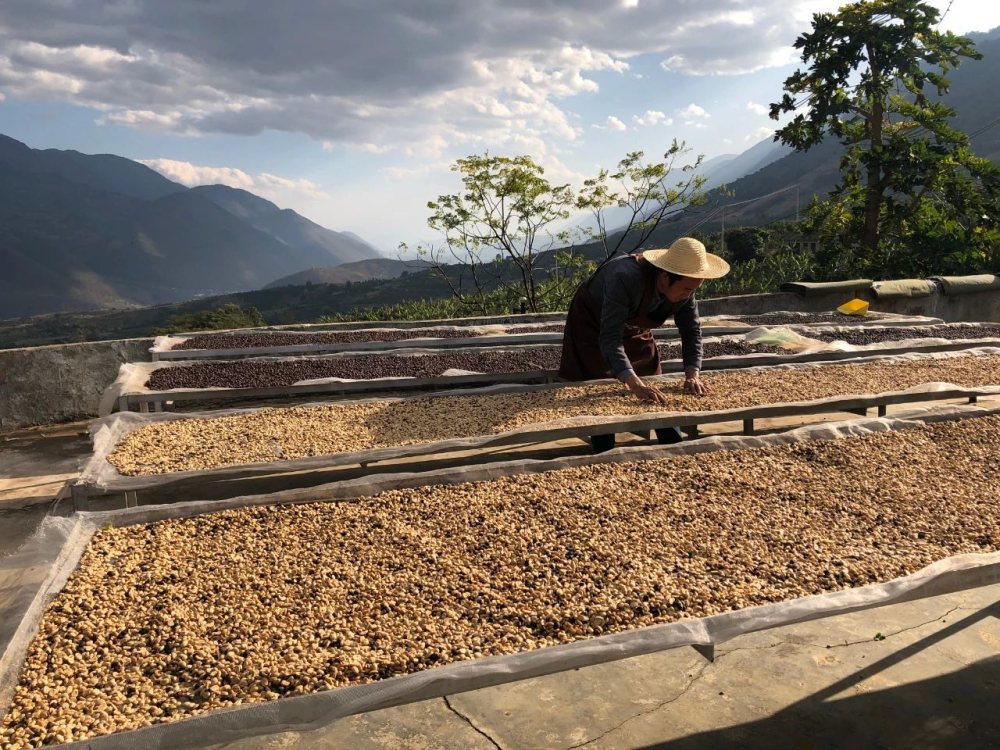
What is Yunnan small grain coffee?
In the traditional sense, only the second batch of tin card and bourbon coffee can be strictly called "small grain coffee". Today, small grain coffee refers more to the widely cultivated Katim. Katim is the offspring of the hybrid between Arabica and Robusta, with 1/4 Luodou gene. The main reason for the development of this variety is that it has rust resistance and high yield properties that the old variety does not have, which is more in line with the needs of farmers to pursue high yield at that time.
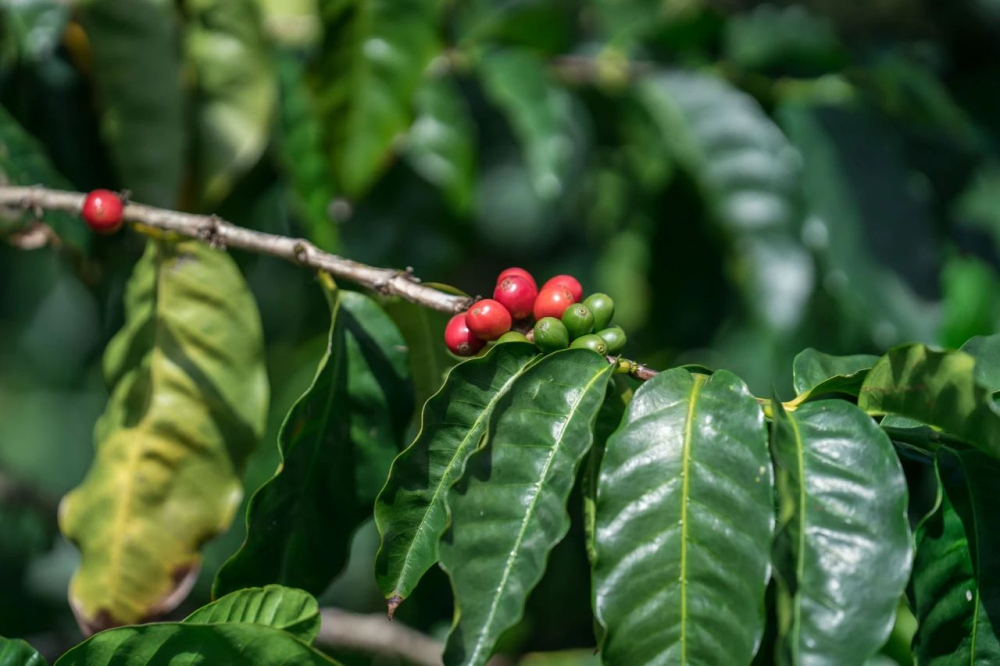
In the past, Yunnan farmers did not accumulate a lot of mature experience in coffee cultivation. Katim was planted at a lower altitude, coupled with rough handling, and the coffee produced was of mediocre quality and often had a negative bitter taste. Most of them are purchased for commercial instant coffee. With the popularization of fine coffee culture in China, many coffee people and researchers have begun to invest in planting in Yunnan producing areas, constantly controlling coffee diseases and insect pests, shading trees, maintaining soil and water, planting altitude, and fresh fruit picking and handling methods to improve the quality of coffee. Today, the professional production of Yunnan Katim coffee can also show a good aroma and cleanliness.
If you want to taste the taste of Yunnan, Qianjie recommends a Katim coffee rations treated with water in Baoshan area, which will be put on the shelf in a small package of 100 grams. Qianjie from this Yunnan rations beans feel a relatively balanced taste, with a little nutty and a little plum fruit aroma, as well as brown sugar-like sweetness, the overall peace.
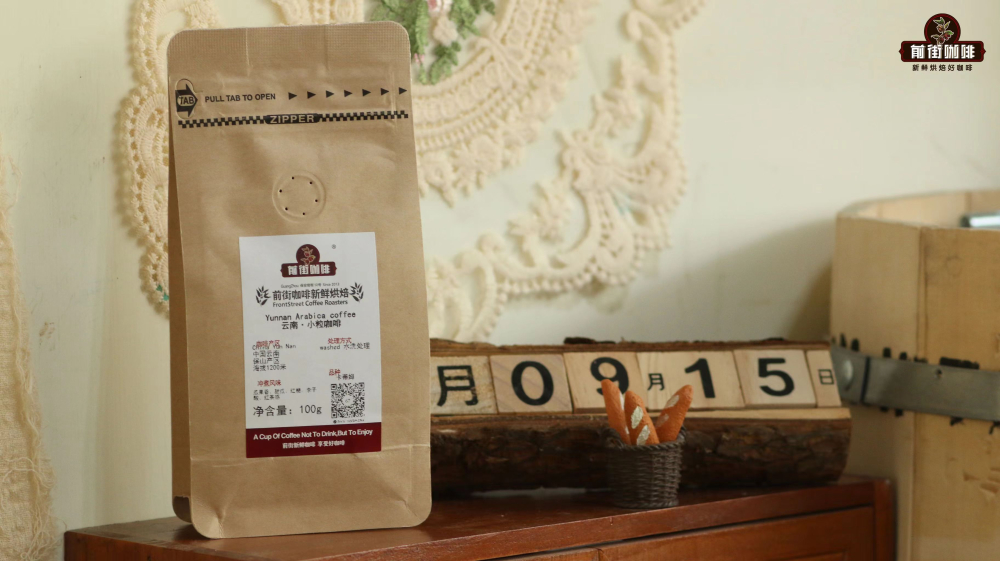
So, are there any iron card varieties of small-grain coffee in Yunnan?
Although Katim varieties are in the majority in Yunnan at present, some growers are still willing to stick to the ancient and high-quality varieties of iron pickup. For example, a coffee bean produced by Qianjie is selected from the tin card with better reputation and is treated in the sun. It is named "Qianjie 2013".
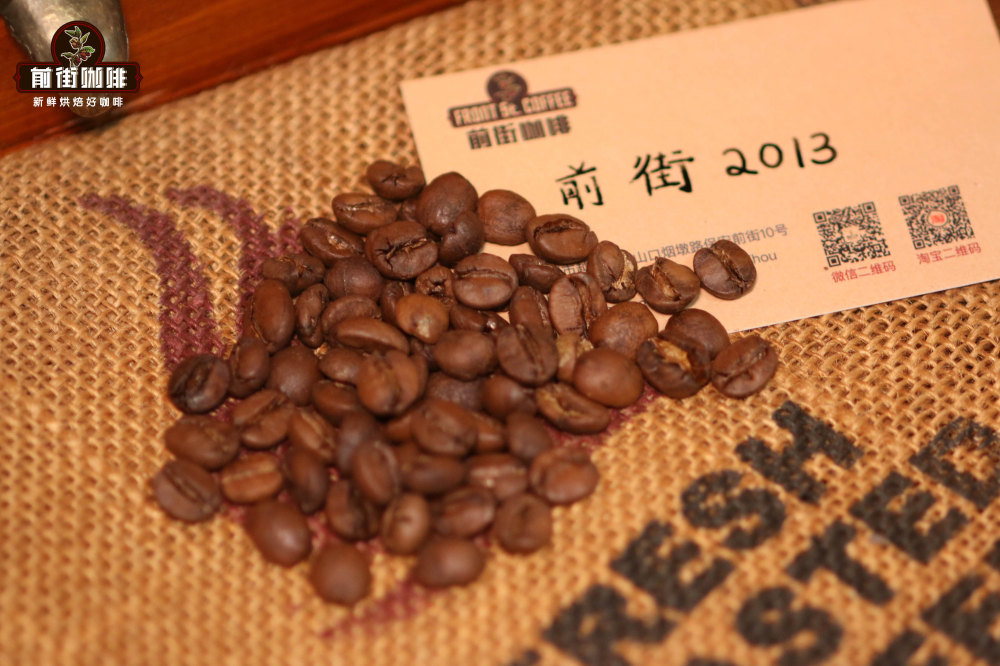
The biggest feature of the iron pickup variety is that the top young leaves are bronzed, so it is also called "red top coffee". Its trunk is thin, the branches are very thin, the branches are slightly inclined, the lateral branches form an angle of 50-70 °with the vertical stem, and the plant is about 5 meters high, so it is not very convenient for manual picking. Iron pickup coffee beans are large, long and pointed at both ends, a bit like an egg. Iron pickup coffee beans often have citrus sour taste, with a sweet aftertaste, is praised by many people as elegant and clear coffee beans, Jamaica Blue Mountain Coffee is a variety of iron pickup.
The iron pickup coffee fruit planted in the front street will be sun-treated immediately after it is harvested to improve the freshness of the coffee. Qianjie will be screened first, flotation is one of the commonly used screening methods, the screened coffee fruit will be dried in the sun. In front of the street, personnel will be arranged to turn regularly to avoid uneven heating of coffee fruits, resulting in excessive fermentation. When the coffee fruit is dehydrated from bright red to dark purple, reaching the target moisture content, it can be sent to shelling and roasting. The tanned tin card shows a fuller fermented flavor than water washing treatment, with outstanding sweetness, with aromas of caramel, berries and black tea.
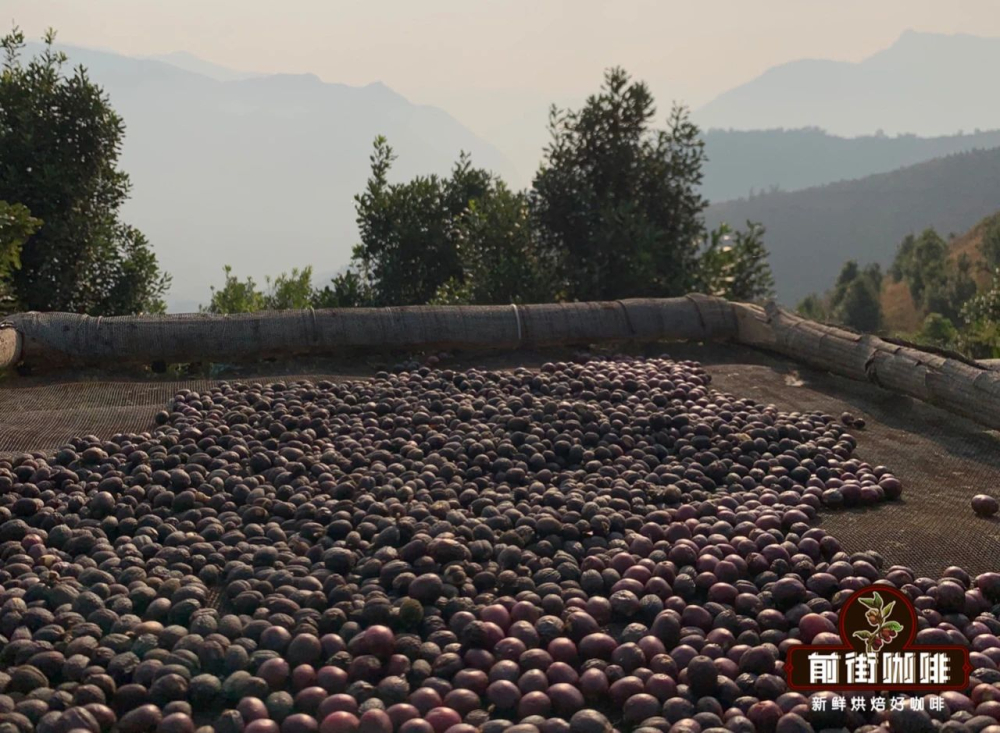
The suggestion of cooking in Qianjie
Daily store products, Qianjie baristas will extract in the form of hand flushing, hoping to present the aroma of the coffee itself to everyone. Hand-made black coffee is not only a daily extraction method produced by baristas in front street, but also a way that many coffee makers can easily operate at home. Qianjie takes into account that Yunnan Tieka coffee tends to be balanced and moderate in taste, that is, it does not have too much acidity and heavy bitterness. The front street tends to use V60 filter cup, which is extracted with medium grinding degree and medium water temperature.
Cooking parameters:
Filter cup: hario v60
Powder content: 15g
Water temperature: 90 degrees Celsius
Degree of grinding: pass rate of No. 20 screen 75%
Gouache ratio: 1:15
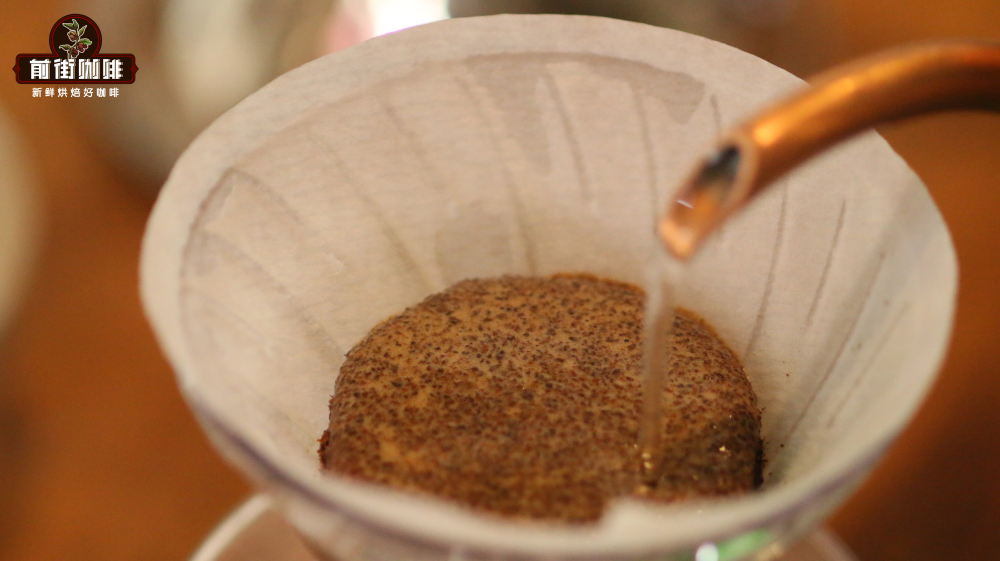
Three-stage water injection: wet the powder bed with twice as much water as coffee powder to form a drum and steam for 30s, then fill the small water from the inside to the outer circle to 125g, wait for the powder bed to drop to half of the filter cup, and continue to inject the same fine water into the third section to 225g, until all the coffee liquid has been filtered and remove the filter cup for about 2 minutes.
Hand Chong Qianjie 2013 iron pickup flavor: caramel, nuts, chocolate, fermentation, berries, black tea, sugar cane. Medium to high mellow thickness, taste clear, black tea aftertaste, rich and varied layers.
Professional coffee knowledge exchange more coffee bean information please follow the coffee workshop (Wechat official account cafe_style)
For more boutique coffee beans, please add private Qianjie coffee on Wechat. WeChat account: qjcoffeex
Important Notice :
前街咖啡 FrontStreet Coffee has moved to new addredd:
FrontStreet Coffee Address: 315,Donghua East Road,GuangZhou
Tel:020 38364473
- Prev
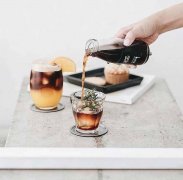
Yunnan small grain coffee is disgusting? You opened it in the wrong way! Analysis of roasting and brewing of coffee in Yunnan
Professional coffee knowledge exchange more coffee bean information please follow the coffee workshop (Wechat official account cafe_style) Yunnan small coffee how to brew 01 | Yunnan production area introduction small coffee is suitable to grow in the mountain area of 8001800 meters above sea level, if the altitude is too high, the taste is sour, too low, the taste is bitter. Small grains of coffee are mostly planted in dry and hot valleys about 1100 meters above sea level, so they taste sour.
- Next
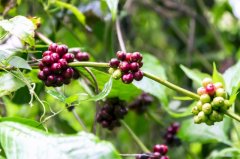
Why is the price of a can of Yunnan small grain coffee so low? Is Yunnan small grain coffee a boutique coffee?
Professional coffee knowledge exchange more coffee bean information please follow the coffee workshop (Wechat official account cafe_style) how to brew Yunnan small coffee in 1955, Yunnan reclamation people began to introduce and try to grow coffee, this is the starting point of Yunnan coffee after the founding of the people's Republic of China. Therefore, with the rise and growth of Yunka, Yunnan has an overall plan for land reclamation. Chi Zhonghua said: in terms of regional layout, we hope to break
Related
- Detailed explanation of Jadeite planting Land in Panamanian Jadeite Manor introduction to the grading system of Jadeite competitive bidding, Red bid, Green bid and Rose Summer
- Story of Coffee planting in Brenka region of Costa Rica Stonehenge Manor anaerobic heavy honey treatment of flavor mouth
- What's on the barrel of Blue Mountain Coffee beans?
- Can American coffee also pull flowers? How to use hot American style to pull out a good-looking pattern?
- Can you make a cold extract with coffee beans? What is the right proportion for cold-extracted coffee formula?
- Indonesian PWN Gold Mandrine Coffee Origin Features Flavor How to Chong? Mandolin coffee is American.
- A brief introduction to the flavor characteristics of Brazilian yellow bourbon coffee beans
- What is the effect of different water quality on the flavor of cold-extracted coffee? What kind of water is best for brewing coffee?
- Why do you think of Rose Summer whenever you mention Panamanian coffee?
- Introduction to the characteristics of authentic blue mountain coffee bean producing areas? What is the CIB Coffee Authority in Jamaica?

